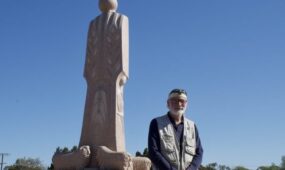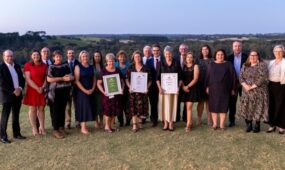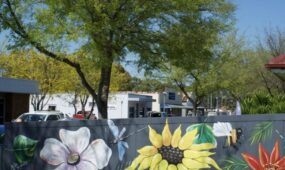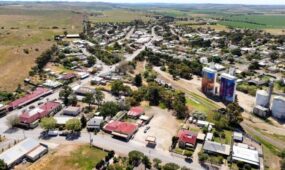Bees still feeling effects of bushfires on KI
Regional
Vegetation losses on Kangaroo Island have created issues for the bee populations and the apiarists who rely on them.

Sign up to receive notifications about new stories in this category.
Thank you for subscribing to story notifications.
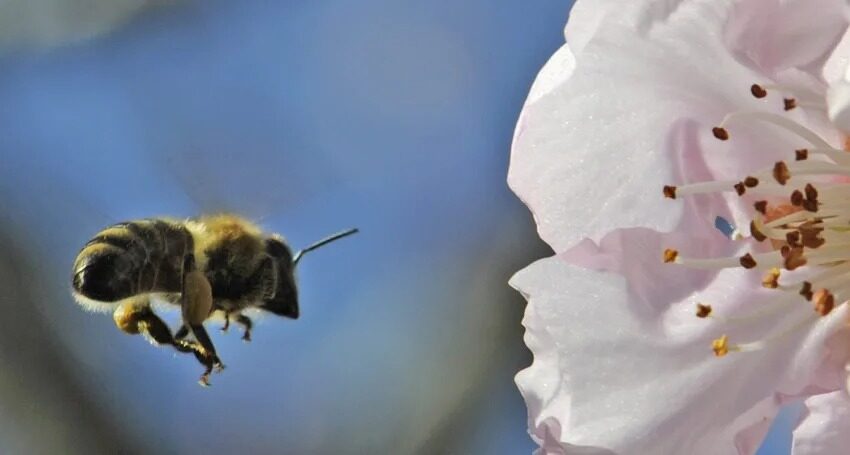
Kangaroo Island’s bee populations have been under threat since almost half the island was burnt by the Black Summer bushfires in 2019-20.
Both the introduced honeybees and native species have been impacted by the lack of vegetation.
Dr Katja Hogendoorn, a senior researcher at the University of Adelaide specialising in bees and pollination, said the fires have pushed the native green carpenter bee to the brink of extinction.
“We found active nests in those small unburnt patches still in 2020 after the fire, but we didn’t find them anymore later in that year or in 2021, so they may not be there anymore,” Hogendoorn said.

The native green carpenter bee has been pushed to extinction on KI. Photo: supplied.
Brenton Davis, beekeeper and director of The Kangaroo Island Ligurian Bee Co. said honey production fluctuates like any primary industry, but the 2022-23 season was the worst on record.
“It was just over 10 per cent of an average season,” Davis said.
“This last year was the worst year in living memory for honey production on Kangaroo Island.
“48 per cent of Kangaroo Island was burnt during the bushfires, that actually equates to over 70 per cent of the native vegetation.”
Another beekeeper, Shawn Hinves from Kangaroo Island Living Honey, said the decrease in vegetation is the main reason for the lack of product.
“If we don’t have plants flowering, then they (the bees) are not able to produce the nectar, which they can turn into honey,” he said.
“We used to produce, on a good year, 25 tonnes of honey.
“Since the fires, we’re sitting on somewhere between five and eight tonnes a year, if that.”
According to Hinves, current flowering across the island is showing promise for improvement in the upcoming season, though he is proceeding with caution.
“This spring, we’re actually having a bump of flowers, there’s a huge amount of variety of flowers out at the moment,” Hinves said.
“Spring has started out really, really good, but that doesn’t tell me that the end of the season is going to be good.
“Obviously we try and stay positive, and we hope the rest of the year will be good.”
Davis had a similar outlook and said that the year is off to a promising start, though he is also approaching the season cautiously.
“It takes up to like seven to 10 years for native ‘veg’ to recover and get back to where it’s producing a surplus of nectar, which is what’s required for honey production,” Davis said.
“So could be some tough times still to go.”
Hogendoorn also said that it will take a long time for the native vegetation to regrow, particularly Banksias, which provide habitat for the local green carpenter bee.
“You get new Banksias when there’s fire, but they need to grow for 30 years; acquire white rods, lose their side branches, and then the bees will use them.”
The invasive varroa mite is another issue currently facing Australia’s honeybee population.
On September 19, the National Management Group announced they would be withdrawing efforts to eradicate the varroa mite, instead moving to manage the outbreaks.
Both Hinves and Davis said they are concerned about the parasite and are hopeful it does not reach Kangaroo Island’s shores.
“We’re all concerned with this varroa mite that has seen an incursion into Australia and now we’ve been told that they’re no longer going to be trying to eradicate it, so that’s a threat to us,” Hinves said.
Hogendoorn agreed the varroa mite would not get to Kangaroo Island in a hurry but said the beekeeping industry should be able to manage it.
“They will learn how to manage it because we know this because it has been managed everywhere else in the world,” she said.
Davis also wants to remind the public although the honey is not as abundant as it was before the fires, it is still available to purchase on Kangaroo Island.
“It’s not as plentiful as it has been in previous years, pre the fires, but there’ll be some particularly rare honey there,” Davis said.
Jump to next article

